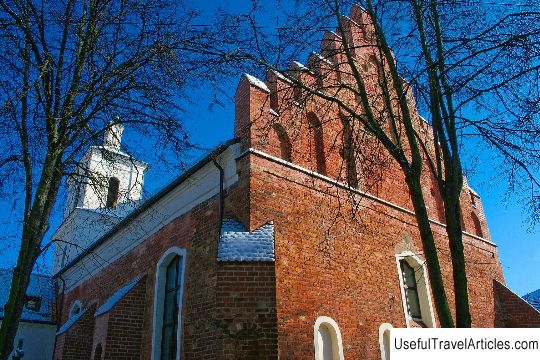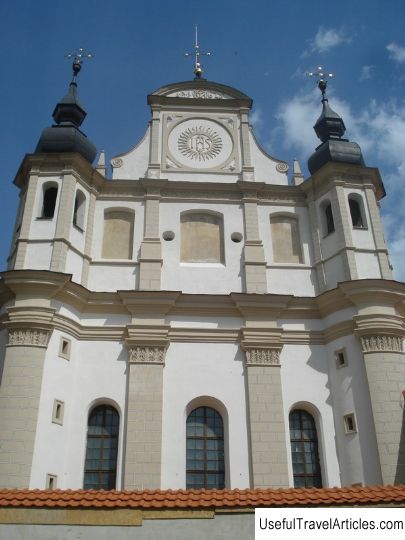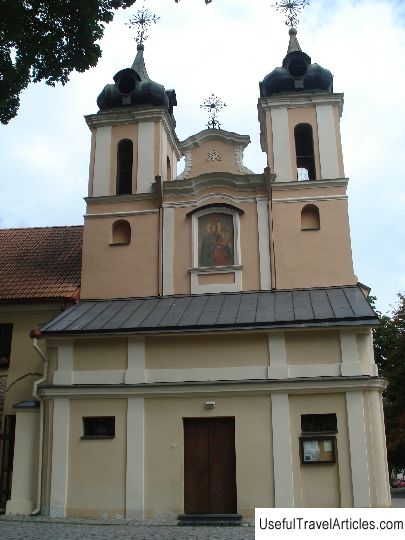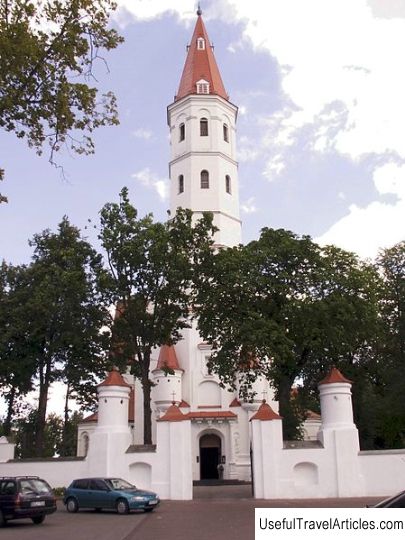Church of St. Francis of Assisi (Svento Pranciskaus Asyziecio baznycia) description and photos - Lithuania: Vilnius
Rating: 8,5/10 (800 votes) 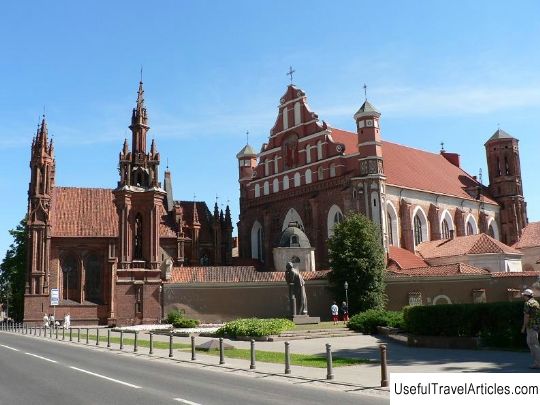
Church of St. Francis of Assisi (Svento Pranciskaus Asyziecio baznycia) description and photos - Lithuania: Vilnius. Detailed information about the attraction. Description, photographs and a map showing the nearest significant objects. The title in English is Svento Pranciskaus Asyziecio baznycia. Photo and descriptionOne of the most striking examples of the sixteenth century Vilnius Gothic is the Church of St. Francis of Assisi, or Bernardine Church, located in the Old Town. The church was built three times: in 1496, at the request of the Lithuanian prince Casimir Jagiellon, it was erected from wood on the site of a pagan sanctuary. After a fire in 1475, the building burned down, and a new stone church was erected in its place in 1490. However, due to inaccuracies in the calculations during construction in 1500, part of the vault of an almost finished church collapsed. The temple was erected for the third time in the period from 1506 to 1516. The church was consecrated in the name of St. Francis of Assisi. And again, during the fires in 1560 and 1564, the church was badly damaged - everything inside burned out, the walls and the arch threatened to collapse. During restoration work, in 1577 the building of the church was significantly expanded. A little later, three chapels were completed, a new altar was erected with a sculptural image of the Crucifixion. During the Russian-Polish war, the church was plundered and burned. It was restored through the efforts of Hetman Mikhail Kazimir Pats and consecrated in the name of St. Francis of Assisi and Bernardine of Siena. Later, the church was still completed and supplied with new altars and frescoes. In 1864, according to the decree of the authorities, the monastery and the temple were closed, and barracks were located in their premises. In 1949 the church was closed and transferred to the Vilnius Art Institute as a warehouse. Finally, the church found its owner in the person of the Bernardine monks in 1992, and was consecrated anew in 1994. By its size, the church is the largest Gothic building in Lithuania. Despite, that the temple was repeatedly rebuilt and reconstructed, it still retained its Gothic style in architecture. And the presence of fortifications in the form of buttresses, three towers and 19 loopholes of embrasures give it the appearance of a Gothic temple of a defensive type. The temple impresses with its majestic simplicity in the external facade. From the south, it is adjoined by two attached chapels, and on the north side is the Bernardine monastery, built at the beginning of the 16th century. The appearance of the facade is rather modest. The composition of the main and side facades is based on the rhythm of tall vertical windows. The lower part of the main western facade is distinguished by a portal with an pointed arch. The main facade is decorated with a profiled brick frieze. The turrets of the facade and the top of the pediment are made in the Baroque style. On the south side of the church are adjacent chapels built later, and on the north side of the Bernardine monastery. Inside the temple is divided into three naves of the same size, the central nave is separated by a triumphal arch and a large altar. Eight octagonal pylons support the vault. The main motive of the composition of all the vaults of the temple is a polygonal star. 11 of the 14 altars built in the eighteenth century and two chapels - St. Nicholas, erected in 1600 and built in 1632, a chapel consecrated in the name of Three kings. The pulpit with sculptures, tombstones in the form of monuments and openwork doors in the Gothic style attract particular attention. The organ, which was damaged during the Second World War, has not been restored. The church has long been considered the resting place of prominent people. Craftsmen and merchants were also buried at the altars for which they donated funds. Burials were stopped in the temple after the laying of the Bernardine cemetery in the District. Inside the temple there are monuments to Petras Veselovkis, Vladislav Tishkevich, as well as the coffin of Simon Kiryalis, as well as a monument to Marshal of the Grand Duchy of Lithuania Stanislav Radvila. Restoration work is currently underway in the temple.        We also recommend reading Sopot Monastery of St. Spas description and photos - Bulgaria: Plovdiv Topic: Church of St. Francis of Assisi (Svento Pranciskaus Asyziecio baznycia) description and photos - Lithuania: Vilnius. |

